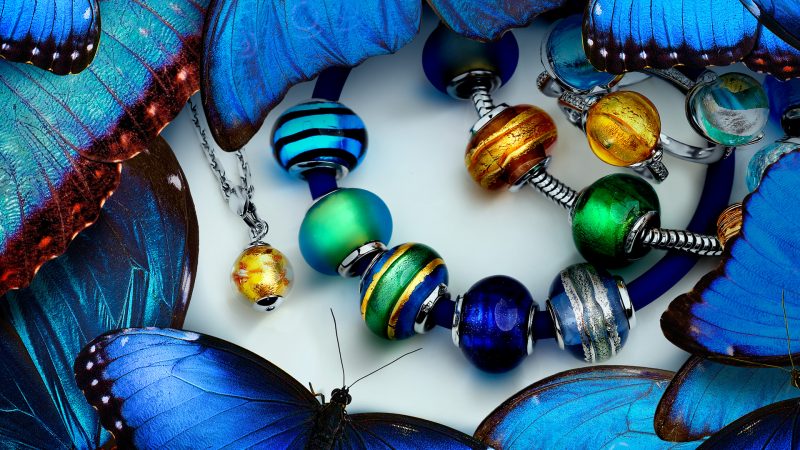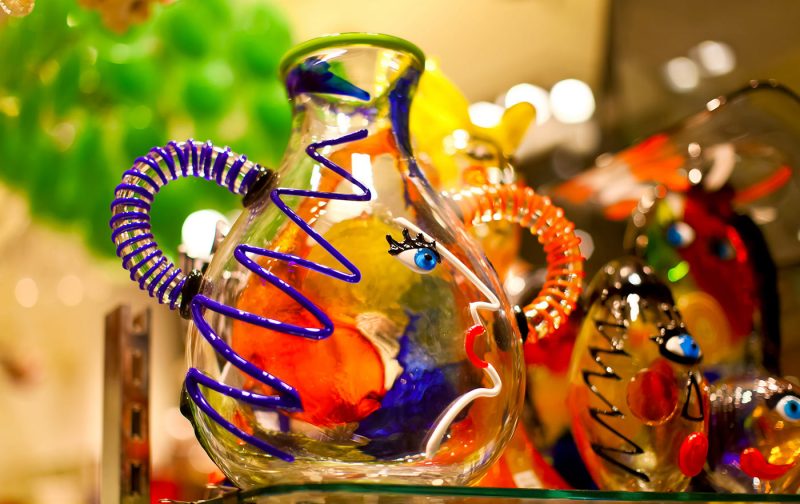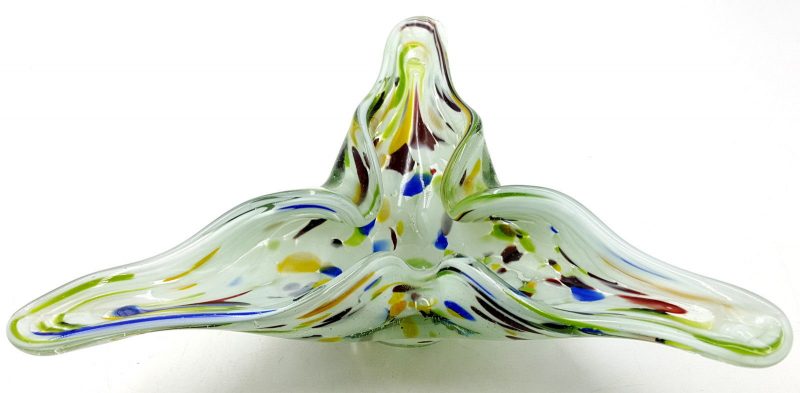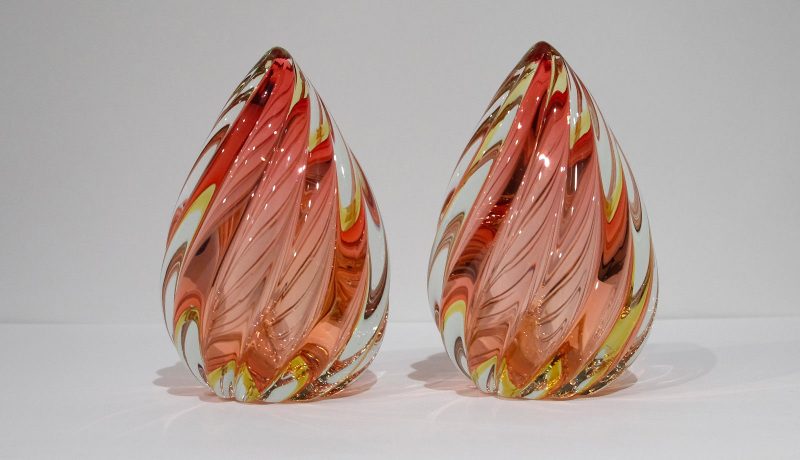When you look at Murano glass, it seems that inside it are bouquets of flowers, placers of gems and a rainbow. Today, these works of art continue to be made only by hand. Often in stores you can stumble upon a fake, it is difficult, but possible, for an ordinary buyer to distinguish it from genuine Venetian glass. You will learn how to do this from the article.
Material Content:
History of Venetian glassmaking
Murano glass began to be made back in the 13th century by Italian craftsmen from the island of Murano, which is located near Venice. Venetian glassblowers knew how to make glass before, but it did not have great artistic value. Simple vessels were made from it for use in everyday life, various jewelry and beads.
Only in the XIII century from Constantinople to Italy got a recipe for the manufacture of Byzantine glass and samples of art products. This event served as an impetus to the development of Venetian glassmaking in the form that brought him world fame.
Glass workshop, located in Venice, was moved to a separate island, fearing a fire in a city built of wooden logs. The craftsmen and their families settled on the island of Murano. Art was inherited, glassblowers were universally respected and had important privileges. For example, they could pass off daughters as representatives of a noble family, and all father's titles were inherited by grandchildren by inheritance. Foreigners could not build glass workshops on the island.
After the conquest of Venice by French troops in the 18th century, Venetian glassmaking fell into decay, old recipes were forgotten, workshops went bankrupt and closed. Only in the middle of the XIX century, unique production was revived, thanks to the emergence of a factory where Venetian glass was again made using traditional recipes.
Where and how is Murano glass made?
In Italy, on the island of Murano, you can see how Murano glass is made in private workshops. Tourists are allowed to look at the production without devoting them to all the details. Guides enthusiastically tell the story of Venetian glassmaking, and Murano glassblowers show how beautiful Venetian vases and glass souvenirs from ordinary sand are born.
Over the thousand-year history of existence, the glass blower tool has not changed. They work with an iron cane, hollow inside, covered with wood for a third.
At one end of the cane is a mouthpiece, at the other - a special thickening for a set of liquid glass, which melts in an oven at a temperature of over 1000 ° C. The master picks up a glass ball with a tube, blows into the mouthpiece, and the cavity of the product is filled with air. So all glass objects are created.
Types of art glass
There are many varieties of Venetian glass. You can see the most complete collection in the museum on about. Murano. The museum is located in the palace of the Palazzo Justinian, which served as the residence of the bishops from the beginning of the XVII to the middle of the XIX century.
The most famous types of glass with about. Murano:
- unpainted clear glass;
- unpainted glass with glass threads inside;
- agate imitating agate patterns;
- mosaic, including millefiori;
- glass painted in various colors thanks to metal oxide;
- glass with enamel and gilding;
- an opaque, milky color that appears due to tin oxide;
- glass with aventurine overflow of many brilliant points, copper is added to it;
- cracked, decorated with the smallest cracks.
Especially interesting are souvenirs created using the Millefiori technique, whose name in translation means “thousand flowers”.
The art of making floral and mosaic patterns inside glass was known in ancient Egypt 200 years BC. e., then it was borrowed by the Romans. The secrets of the Millefiori technique became known to Venetian glassblowers in the 13th – 17th centuries.
How to distinguish an original from a fake
Murano glass dishes, souvenirs and jewelry are often faked by unscrupulous manufacturers, trying to make a big profit.
Tips on how to distinguish real glass from fake:
- real glass is smooth, all ornaments are enclosed inside products, and not on the surface;
- on factory glass there is always an inscription embossed or glued to a golden label;
- Murano glass products are heavier than ordinary glass;
- no seams are visible on the surface.
Original Murano glass products are expensive. The price starts from 50 and reaches 1 thousand euros.
The Manufacturers Association has approved the Vetro Artistico Murano trademark, which can only adorn genuine products. When buying, you need to pay attention to its presence, this will help distinguish the original from a fake.
What is made of Murano glass
Visiting Murano Island in Italy, you can buy beautiful souvenirs made of Murano glass. They are sold in shops located along the promenade. Glass cases, chandeliers, vases, saucers, cups, glasses, various figures, toys, jewelry are visible in the windows. They shimmer with all the colors of the rainbow, bewitching with beautiful patterns and skillful work of masters. It will be easier to distinguish Murano glass from fake by getting acquainted with the original works of Venetian glass-makers.

















